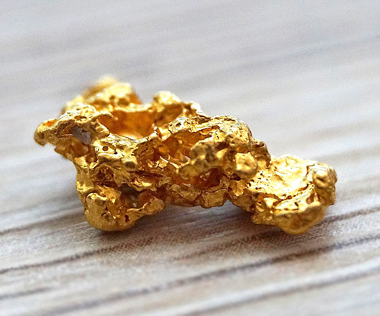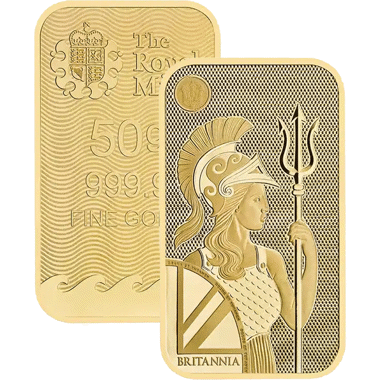Why Is Gold So Expensive? Breaking Down the Costs
Why gold’s limited supply keeps prices high
Supply and demand are strongly linked to the price of gold, and one of the main reasons why gold is so expensive is due to its scarcity. Unlike paper currency or digital assets like Bitcoin, gold is a finite resource that needs to be physically mined.
The Earth only has a limited supply of this precious metal, with reserves estimated at around 50,000 tonnes, and most of the accessible deposits have already been extracted. Global gold production has been stable for over a decade, averaging around 3,500 tonnes a year, and because supply is so limited, any rise in demand can push up gold prices.
Gold’s rarity is what gives this precious metal its intrinsic and lasting value, as every ounce represents hours of labour, exploration, and a finite piece of our planet’s natural resources.
The cost of mining and refining gold
The high cost of bringing gold into the market is another factor that helps to make gold so valuable. Gold mining is a very expensive and time-intensive process with many stages including exploration, extraction, processing, and refining.
The exploration stage to find and access the gold can take many years, with many millions often spent on geological surveys and exploratory drilling to find a workable gold deposit. Once a gold mine is in operation, there are then many expenses for things such as large machinery and fuel, labour, environmental and safety compliance, transportation, and refining costs.
After it has been extracted from the ground, gold must then be refined to achieve the desired purity. This involves a process using a combination of melting, chemical processes, and electrolysis to separate it from other metals and to remove any impurities.
All these operational and technical demands make up a large part of what makes gold expensive to produce.
How do global economic factors influence gold prices?
Economic conditions can have a strong impact on the price of gold. As gold has long been regarded by many as a reliable store of wealth, demand for this precious metal can often increase when there is low confidence in traditional currency.
Some economic influences on gold’s price can include:
Inflation: As the purchasing power of money gets weaker, gold’s appeal as a tangible asset can often get stronger.
Interest rates: Lower interest rates will often make non-yielding assets like gold an attractive option.
Currency strength: If the US Dollar is weakened, this will usually mean a rise in gold prices due to gold being globally traded in USD.
Geopolitical uncertainty: Political instability can often lead to increased buying activity.
Central banks: When central banks add large amounts to their gold reserves as part of their long-term monetary strategies, global demand can rise, influencing prices.
How industrial and jewellery demand impacts gold prices
Another reason gold is expensive is due to the many industries that rely on it. Demand from the bullion industry and central banks is extremely important, but also nearly half of the world’s gold consumption comes from the manufacturing of jewellery, especially in regions like India and China where gold is important in cultural traditions and celebrations.
Gold also plays an important part in industry and is used widely in electronics, dentistry, and technology thanks to its unique physical properties. A malleable metal that can easily be combined with other materials, gold is highly valued for its conductivity and resistance to corrosion. Industrial demand for gold in this modern age is growing, which adds pressure to global supply and results in higher prices.
Gold has huge appeal across a huge range of uses including industrial, cultural, investment, and currency. This means demand has stayed strong, resulting in a sustained long-term value.
How minting and distribution costs affect gold prices
Beyond gold’s raw material cost (spot price), other costs are added to the price of gold, and many of these come from the final stages of production - minting, assaying, and distribution.
Once it has been extracted and refined, the raw gold must be shaped into recognised products such as bullion bars, coins, or jewellery. In the bullion industry, mints and refiners will then charge a premium over the metal’s spot price to cover their costs for design and minting, packaging and authentication, and secure logistics and delivery. Another small premium will usually then be added by the bullion dealer, in order to cover their own business costs.
While these additional costs are small in relation to gold’s market price, they do contribute to the overall retail price that a client will see when they purchase their physical gold bullion bars and coins.
In conclusion: will gold remain expensive?
So, why is gold expensive? Its high price is due to its limited natural supply, high mining and refining costs, and the growing global demand that comes from its economic and industrial uses.
Each ounce of gold represents a huge amount of effort, energy, and craftsmanship - from its beginnings deep within the earth to the modern precision of worldwide refiners and mints. This most precious of metals has a balance of scarcity and demand that cannot be matched, ensuring its lasting position as one of the world’s most valuable and trusted tangible assets.
This blog represents one person’s opinion only. Please note, gold and silver prices may go down as well as up. Atkinsons Bullion & Coins accepts no responsibility for any losses based on information we have provided. We do not offer investment advice. Please carry out your own research before making an investment decision.










